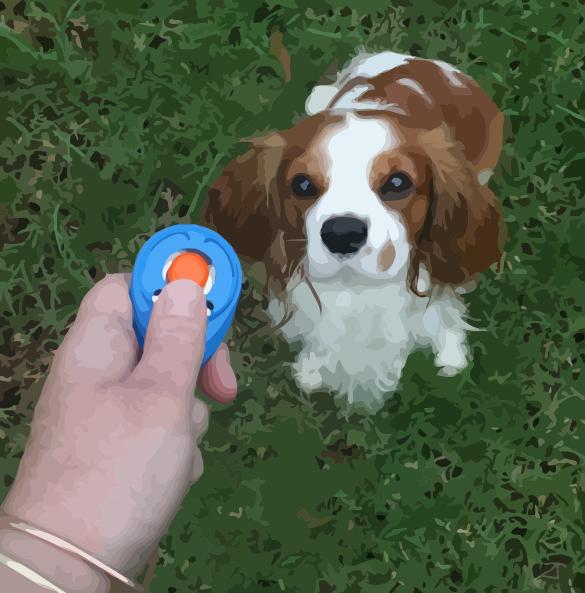Three Cues to Decide on Before Beginning Dog Training
Table of Contents

Obedience training for dogs is no easy task for a first-time dog owner or even experienced dog owners and the best ways to get results are not necessarily common knowledge. Many people have seen shows like The Dog Whisperer or Dogtown and may think they know a bit about dog training, but there is much of which most are unaware and there is always room to learn.
One of the most important qualities of good dog training is consistency. It is easy to negate the effectiveness of training by changing fundamental elements of how you go about it. If you are not the only person training your dog, consistency can be especially difficult to maintain. Though I have been happy with the progress my own dogs have made through collaborative training efforts, there are a few things I wish I had known from the start.
These three cues make up what I believe to be the fundamental core of dog obedience. They can be performed with the help of a clicker or completely verbally, but they need to be distinguishably different to your dog.
The cognitive attributes of dogs require that these markers happen quickly after they perform the behavior. Cues should be given within a few seconds of the behavior. Wait much longer, and they will not likely put together what behavior to associate with your action.
With verbal cues, it is best to use something monosyllabic as the first syllable is most important in your dog's ears. You also don't want to pick a sound that the dog will hear often in casual settings as this will diminish the effectiveness of a cue.
Affirmative Cue
When your dog engages in a desirable behavior by obeying a command or acting appropriately on its own, it should be reinforced with an affirmative cue and a reward. The reward can be food, verbal praise, toys, or attention. Different dogs are motivated to different degrees by different options, but it shouldn't be too difficult to figure out what your dog wants most.
Words like “yes,” “good,” or “great” are commonly used verbal affirmative cues, but this is fairly open to personal preference. The tone used should be excited and higher pitched than your normal speaking level. Dogs do pick up on this. Clickers are also an effective affirmative cue.
Corrective Cue
There may be some debate about corrective cues, but the term should not be attached to punishment, abuse, or even what is referred to as “force training”. Physical touch is not necessary in use of corrective cues. Also, harsh or intimidating sounds are not necessary. Clicker training does not generally encompass corrective cues, but they may be used to supplement clicker training.
When a dog does something of which you do not approve, letting the dog know you do not approve and this will not lead to a reward will help decrease the frequency of occurrences. This includes improperly executed or unexecuted commands and behavior that is destructive to others or even the dog itself, such as chewing your furniture or going somewhere it shouldn't. There are wireless dog fences available that provide a corrective cue to help keep them within boundaries you specify.
As with affirmative cues, corrective ones need to be delivered quickly upon incident accompanied by withholding of reward, luring to desired position or behavior with reward, or gentle physical contact if necessary.
Since “no” is heard often colloquially, people commonly prefer to use sounds like “uh-uh” or “aaah.” The tone should not be excited or high pitched, but should also not be frightening. “Unenthused” is how I like to describe the ideal corrective tone. Also, avoid using the dog's name as a corrective cue as this will create problems when you are trying to get your dog's attention.
Release Cue
Release cues are an important and overlooked element of dog obedience. Many of us have probably met the dog of a friend and been jumped on by the excited pup. They may even demonstrate obedience by sitting when their owner commands, but if they get up to jump on you a moment after, it defeats the value of the command. One reason this happens is because many dog owners don't teach a release cue.
Teaching a release cue lets the dog know you want them to hold a command for an indefinite period of time. This is obviously important in the “stay” command, but it applies to different areas of obedience. When a dog has satisfactorily maintained a command such as “sit,” “down,” or “bed,” the release cue, accompanied with a reward, reinforces this level of discipline. Premature breaking of the command can be met with a corrective cue and action or withholding of reward.
Any time a dog goes back a desired or commanded behavior, it should be marked with the affirmative cue. This is important to remember in all areas of obedience training even when your dog may be struggling to grasp things or perform perfectly.
Lastly, though training can be frustrating, getting frustrated or engaging in offensive behavior toward your dog does not do any good for you or your dog. It is good to give things a break for a bit and come back to it later. Progress is made even when it is difficult to measure. Whatever methods you employ to train your dog, it should be a labor of love. It certainly helps to plan ahead though.
Adam Holmes is a nature enthusiast and dog lover who enjoys communicating his passion through the written word. When he is not training or playing with his dogs, he freelances for Havahart Wireless, which specializes in progressive, humane wireless dog fences.




Leave a Reply